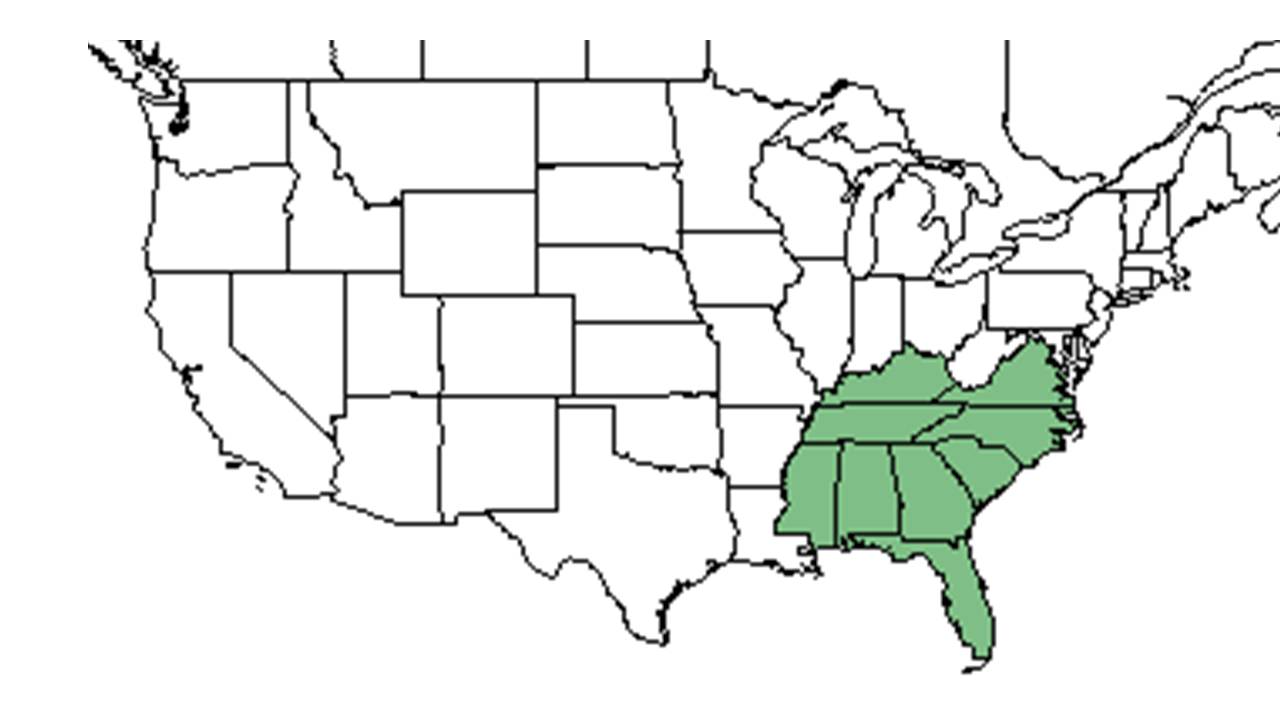Difference between revisions of "Penstemon australis"
(→Ecology) |
|||
| Line 35: | Line 35: | ||
===Phenology=== <!--Timing off flowering, fruiting, seed dispersal, and environmental triggers. Cite PanFlora website if appropriate: http://www.gilnelson.com/PanFlora/ --> | ===Phenology=== <!--Timing off flowering, fruiting, seed dispersal, and environmental triggers. Cite PanFlora website if appropriate: http://www.gilnelson.com/PanFlora/ --> | ||
Flowering has been observed in April, while fruiting has been observed in May (FSU Herbarium). | Flowering has been observed in April, while fruiting has been observed in May (FSU Herbarium). | ||
| + | ===Seed dispersal=== | ||
| + | According to Kay Kirkman, a plant ecologist, this species disperses by gravity. <ref name="KK"> Kay Kirkman, unpublished data, 2015. </ref> | ||
| + | <!--===Seed bank and germination===--> | ||
| − | |||
| − | |||
===Fire ecology=== <!--Fire tolerance, fire dependence, adaptive fire responses--> | ===Fire ecology=== <!--Fire tolerance, fire dependence, adaptive fire responses--> | ||
This species has been found in habitat that is burned annually (FSU Herbarium). | This species has been found in habitat that is burned annually (FSU Herbarium). | ||
Revision as of 20:01, 12 April 2016
| Penstemon australis | |
|---|---|
Error creating thumbnail: Unable to save thumbnail to destination
| |
| Photo taken by Gil Nelson | |
| Scientific classification | |
| Kingdom: | Plantae |
| Division: | Magnoliophyta - Flowering plants |
| Class: | Magnoliopsida – Dicotyledons |
| Order: | Scrophulariales |
| Family: | Scrophulariaceae |
| Genus: | Penstemon |
| Species: | P. australis |
| Binomial name | |
| Penstemon australis Small | |

| |
| Natural range of Penstemon australis from USDA NRCS Plants Database. | |
Common name: Eustis Lake beardtongue
Contents
Taxonomic notes
Description
Penstemon australis is a perennial herbaceous species.
"Virgate, single-stemmed to bushy, perennial herbs with a mildly fetid odor; stems glabrous or pubescent. Leaves simple, unlobed, serrate or entire, those of the basal rosette petiolate, cauline leaves sessile, opposite, usually lanceolate. Inflorescence a panicle or thyrse. Sepals 5, free to base; corolla tubular, 2-lipped, the upper lip 2- lobed, the lower lip 3-lobed, throat inflated; fertile stamens 4, staminode pubescent; stigmas undivided, style 1. Capsule subconical; seeds angular, reticulate, usually ca. 1 mm in diam." - Radford et al 1964
"Stems one to several, 2-7 dm tall, not branched above the base, glabrous to pubescent. Leaves glabrous to pubescent, moderately thick, the basal oblanceolate to obovate, usually 5-10 (14) cm long, 1.5-2.5 (3.5) cm wide, subentire or occasionally dentate, often persistent through anthesis, cauline laves narrowly lanceolate, 3-10 cm long, 0.5-2.5 cm wide, coarsely toothed to rarely subentire. Thyrse moderately compact, not leafy, glabrous to densely glandular, the tips of the glands less than ¼ the length of, and little broader than, the stalks. Sepals 3-5 mm long; corolla rose to lavender and violet, the guide lines usually reddish purple alternating with white, the floor deeply pleated, 15-25 mm long, gradually inflated to a throat 6-8 mm in diam., lobes spreading. Anther sacs glabrous, staminode densely bearded for most of its length with golden trichomes 1 mm long, exserted. Capsule 6-8 (10) mm long; seeds 0.1-1.1 mm long, often conspicuously apiculately thickened." - Radford et al 1964
Distribution
Ecology
Habitat
P. australis occurs in the dry loamy sand of longleaf pine forests and pine-oak sandhills (FSU Herbarium). It also can be found in mixed woodlands and pine-hickory uplands (FSU Herbarium). On the other hand, it appears in disturbed habitat as well, including roadsides and near areas that have been logged (FSU Herbarium). Associated species include Pinus palustris, Carya, and Quercus (FSU Herbarium).
Phenology
Flowering has been observed in April, while fruiting has been observed in May (FSU Herbarium).
Seed dispersal
According to Kay Kirkman, a plant ecologist, this species disperses by gravity. [1]
Fire ecology
This species has been found in habitat that is burned annually (FSU Herbarium).
Conservation and Management
Cultivation and restoration
Photo Gallery
References and notes
Florida State University Robert K. Godfrey Herbarium database. URL: http://herbarium.bio.fsu.edu. Last accessed: June 2014. Collectors: Rodie White, Robert K. Godfrey, R. A. Norris, R. Komarek, and Loran C. Anderson. States and Counties: Florida: Gadsden, Leon, Liberty, Wakulla, and Washington. Georgia: Grady.
Radford, Albert E., Harry E. Ahles, and C. Ritchie Bell. Manual of the Vascular Flora of the Carolinas. 1964, 1968. The University of North Carolina Press. 947. Print.
- ↑ Kay Kirkman, unpublished data, 2015.